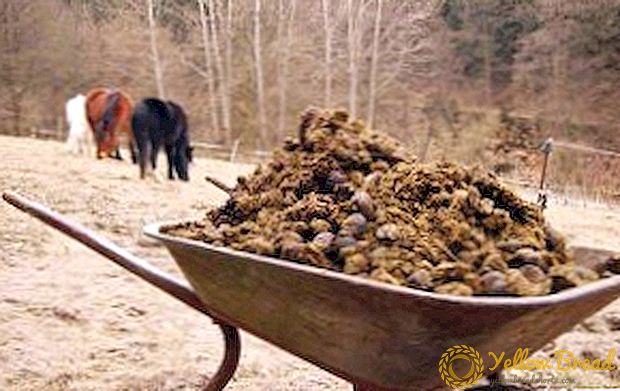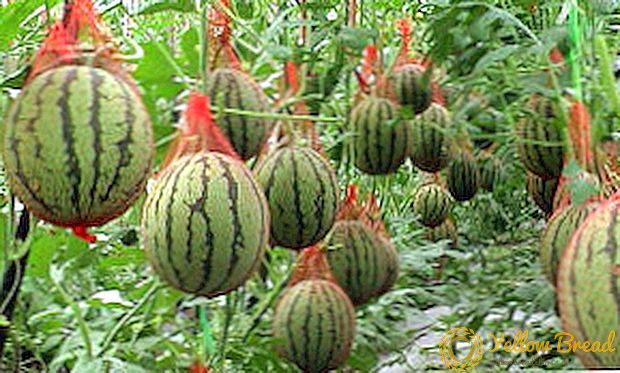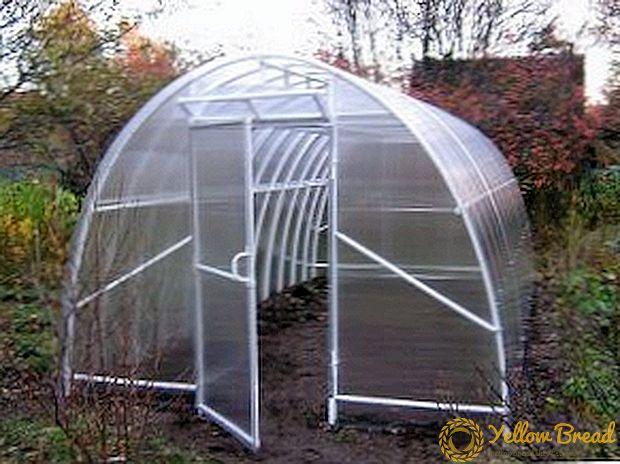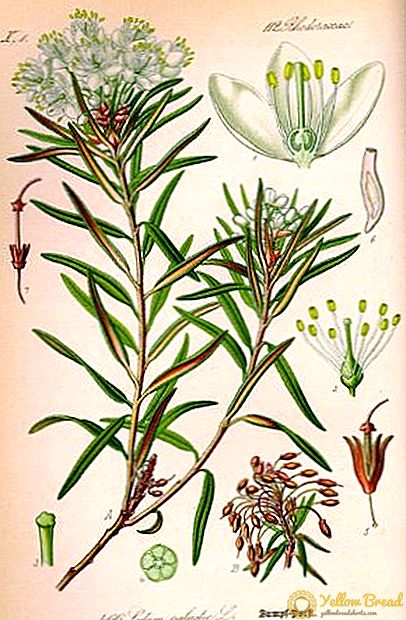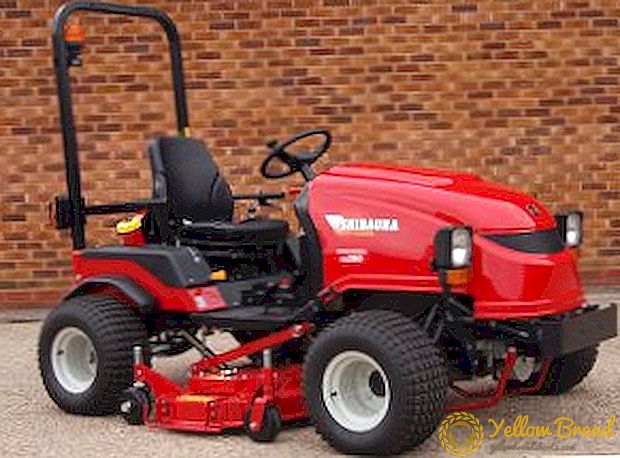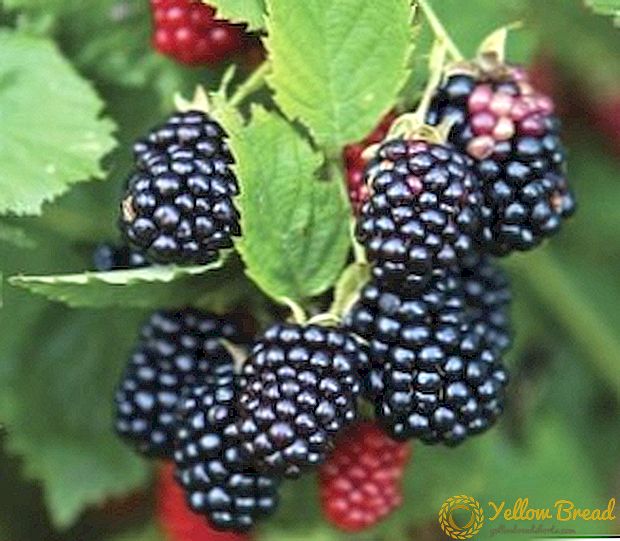 Blackberry Ruben is known worldwide. In 2012, a patent was issued for this variety by its inventor - John Ruben Clark, a professor at the University of Arkansas, who made the United States the birthplace of not only blackberry Ruben, but also other blackberry varieties.
Blackberry Ruben is known worldwide. In 2012, a patent was issued for this variety by its inventor - John Ruben Clark, a professor at the University of Arkansas, who made the United States the birthplace of not only blackberry Ruben, but also other blackberry varieties.
- Description of blackberry Ruben
- The advantages and disadvantages of the variety
- Proper planting blackberry varieties Ruben
- When to plant
- How to choose and prepare a place for landing
- How to plant a blackberry Ruben
- Features care for blackberries varieties Ruben
- How to water
- How to feed a blackberry
- Does the blackberry garter need Ruben?
- Terms of ripening and harvesting
- How to properly trim the blackberry Ruben
- How to cover Ruben blackberry for the winter
Description of blackberry Ruben
The repair group of blackberry varieties, in which the blackberry Ruben was the first to enter, is distinguished by fruiting on shoots already in the year of planting. Characterized by a combination of the following basic qualities:
- huge (up to 4.5 cm) glossy berries with an average weight of 10 g, and individual copies - up to 16 g;
- in a pleasant taste balance almost no acid is present;
- the hardness of the berries facilitates long-term preservation, including during transportation;
- upright shoots can do without support;
- due to their medium size and low density, thorns are not a serious obstacle for harvest workers.

The advantages and disadvantages of the variety
The undoubted advantages of the variety include the excellent yield of blackberry Ruben, which is also determined by the fact that berries can be harvested twice a year. Of the other advantages, the most noteworthy are:
- the impressive height (1.8 m, and up to 2.5 m) of direct shoots does not lead to their entanglement and wringing;
- the massiveness of the bush does not interfere with its accuracy;
- the difficulty of caring for blackberries is even more simplified after harvesting - spikes fall from the shoots.
- First of all, the end of November is not the best time for country work. The weather can prevent the regular check of ripening berries and their full collection;
- secondly, the entire second crop may be endangered by the natural sterilization of pollen if summer is too hot and dry.
Proper planting blackberry varieties Ruben
Blackberry Ruben is ready to indulge his owners with the wealth of fruit brought with an enviable constancy, subject to certain rules of its planting and subsequent care.

When to plant
The end of the autumn season will be the best time to plant a blackberry Ruben. Early spring is coming too. After planting during this period, the plant will have time to take root and gain strength for wintering.
How to choose and prepare a place for landing
The impact of the direct sun on blackberry bushes should be very limited, so when choosing a place to plant you need to look for areas that are half shaded. Blackberry Ruben is undemanding to the type of soil, which greatly facilitates the choice of a place for its planting. The best option would be sandy soil.
How to plant a blackberry Ruben
 Ideal when planting blackberry seedlings Ruben is 80 centimeter distance between them. But welcome, and large, up to 1.3 m intervals. Between the rows leave a 2-meter gap. Planted plant in 2 ways - bush (in separate holes) and solid stripe (in trenches). In the first variant, square ones, with a side of 0.6 m, are dug in the 40-centimeter depth of the pits, in which the seedlings are then buried with the same soil mixed with humus (1: 2) and a glass of wood ash.
Ideal when planting blackberry seedlings Ruben is 80 centimeter distance between them. But welcome, and large, up to 1.3 m intervals. Between the rows leave a 2-meter gap. Planted plant in 2 ways - bush (in separate holes) and solid stripe (in trenches). In the first variant, square ones, with a side of 0.6 m, are dug in the 40-centimeter depth of the pits, in which the seedlings are then buried with the same soil mixed with humus (1: 2) and a glass of wood ash.
In the second variant, the continuous strip is a boat-shaped shallow trench, the soil in which before planting is dug along with humus and ash and leveled with a rake. Landing schemes: in the bush version - 1.8 x 1.8 m, in the trench - 0.5 x 1.8 m.
Features care for blackberries varieties Ruben
Caring for the bushes of this variety does not require much effort. Its two key points are maintaining the desired humidity and regulating the intensity of sunlight.
How to water
Watering blackberries Ruben should have a constant, but not everyday, regularity. Caring for the necessary moisture is at the center of comprehensive care for an unpretentious plant as a whole. In industrial blackberry cultivation even irrigation systems are used. Dry weather should not be ignored, otherwise the plant will respond with small berries of irregular shape, and a week before the mass summer flowering (late July - early August) irrigation activity should be increased.
How to feed a blackberry
 Blackberries are fed organic and mineral fertilizers. Blackberry nitrogen fertilizing is done in spring, potash phosphate - in the fall. Since we are not talking about industrial cultivation of super-yield, it is proposed to gardeners to bring in the soil a mineral-organic complex of 40 g of ammonium nitrate, 100 g of superphosphate, 30 g of potash substances and up to 7 kg of humus under each blackberry bush.
Blackberries are fed organic and mineral fertilizers. Blackberry nitrogen fertilizing is done in spring, potash phosphate - in the fall. Since we are not talking about industrial cultivation of super-yield, it is proposed to gardeners to bring in the soil a mineral-organic complex of 40 g of ammonium nitrate, 100 g of superphosphate, 30 g of potash substances and up to 7 kg of humus under each blackberry bush.
Does the blackberry garter need Ruben?
Experienced gardeners are advised to tie a blackberry Ruben, despite its compactness. Without a garter, there are risks of rotting of the fruit on the lower branches and excessive inclination of the vine. The number of fruit-bearing shoots due to lateral branching can be increased by pinching the tops in early spring, which also contributes to the formation of new roots. It is also desirable to ration the bushes, leaving no more than 6-7 shoots on each. 
Terms of ripening and harvesting
Berries ripened on last year's sprouts are harvested at first, based on the usual calendar, once in June (this is a rather early blackberry variety), and then on the shoots of the current year in September-November.Fruits are harvested along with the stalks, which are pruned with scissors. This is done to improve subsequent storage. It is not recommended to keep the harvested blackberry for more than 4 days. At temperatures close to zero and humidity 90% storage can be extended to 3 weeks.
How to properly trim the blackberry Ruben
The cold climate has caused to some extent a sensational method of pruning such a blackberry, at the same time completely solving the problem of winter preservation - the plant is cut to the ground level. The sprouts that grew after that will produce a harvest in June. Berry ripening can be accelerated by one and a half to two weeks, if the cover of agrofibre laid on the planting in early spring can be removed when the sprouts reach 40-50 cm.
How to cover Ruben blackberry for the winter
 If the gardener wants to achieve a second harvest, he is expected to have a rather complicated procedure of placing a straight-growing vine on the ground with its subsequent shelter from frost or searching for other wintering options, the effectiveness of which may be comparable to the profitability of the secondary harvest of berries. Not the highest level of winter hardiness of the blackberry Ruben does not allow to completely do without shelter in winter. Unlike other berry crops (currants, grapes), it only needs to cover the roots, after removing all woody growths that had grown during the preceding cold season, and in this case be satisfied with the blackberry taste of the harvested berries in the early summer and free from productive troubles in the fall.
If the gardener wants to achieve a second harvest, he is expected to have a rather complicated procedure of placing a straight-growing vine on the ground with its subsequent shelter from frost or searching for other wintering options, the effectiveness of which may be comparable to the profitability of the secondary harvest of berries. Not the highest level of winter hardiness of the blackberry Ruben does not allow to completely do without shelter in winter. Unlike other berry crops (currants, grapes), it only needs to cover the roots, after removing all woody growths that had grown during the preceding cold season, and in this case be satisfied with the blackberry taste of the harvested berries in the early summer and free from productive troubles in the fall.
Blackberry Ruben has occupied a worthy niche in the domestic and global market space. Excellent taste and fullness of vitamins are optimally combined with its culinary aesthetics when decorating confectionery and setting the festive table.

